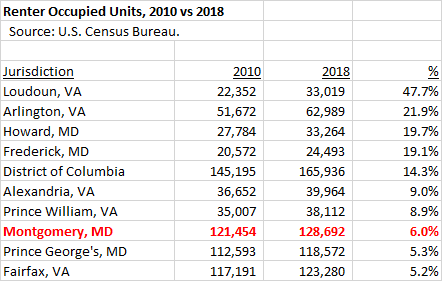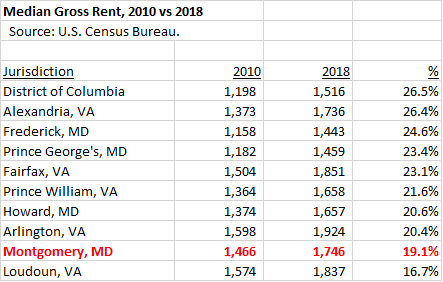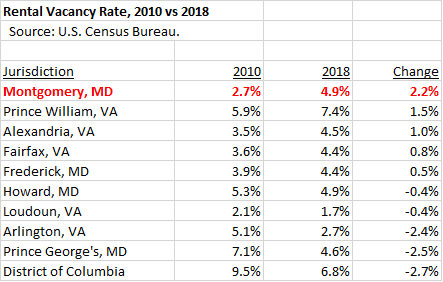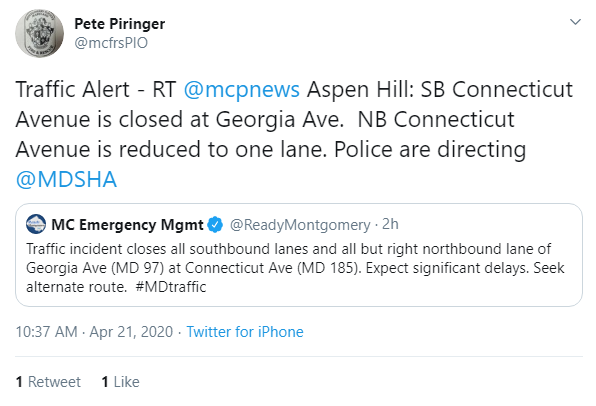By Adam Pagnucco.
Part One of this series laid out the rules and methodology for how we determined MoCo’s most influential people. These lists were developed by adding together the nominations of 85 people who are themselves extremely knowledgeable and influential. Today, we present the mind-bending conclusion!
5 (tied). Jill Ortman-Fouse, Former Member, Board of Education – 16 votes
Source: Love her or loathe her, she’s taken center stage in the most controversial topic in county politics right now.
Source: Even though no longer in an elected position her past actions on the BOE had influence over what is happening with the BOE/MCPS now. She regularly stirs the pot online and offline and isn’t scared to go head to head with her opponents.
AP: It’s amazing to think that JOF’s influence is even greater now than during her time on the school board, but it is. Even her opponents in the school boundary war concede her influence with their relentless and often personal attacks. JOF’s lasting mark will be in her mentorship of the next wave of MCPS activists, many of whom idolize her and have vowed to carry on her agenda of diversity and equity for years to come.
5 (tied). DeRionne Pollard, President, Montgomery College – 16 votes
Source: Not only has she done tremendous work with the college, partnered with corporate and community leaders as well as electeds across the county, but she’s also led strategic conversations on race as she tries to address those barriers not only for her students, but for the future of the county.
Source: Holy moly, what a dynamo of leadership! She is inspiring, bold and always on! She shoots for the moon and rarely misses. Just look at her track record of budget successes for the college.
AP: It’s easy to forget what a mess Dr. Pollard’s predecessor, former Montgomery College President Brian Johnson, made of the college. The college’s professor union discovered through public information act requests that Johnson was frequently absent from the office, “routinely censored” information, prevented employees from talking to trustees and ran up outrageous expenses. Later, it was revealed that Johnson was wanted for arrest in Maricopa County, Arizona for failure to pay child support and the sheriff even said, “We’d be happy to put him in jail.” Thankfully, that’s ancient history. Montgomery College has rebounded nicely under Dr. Pollard’s leadership and is now one of the highest-ranking colleges in Maryland. That’s one reason why she has been at the college for ten years, an unusually long tenure for a person in her position.
4. Gino Renne, President, MCGEO – 17 votes
Source: Still one of the gorillas in MoCo politics, always at the table.
Source: Manages to be influential despite MCGEO’s pathetic track record in actually getting candidates elected. Remember the Duchy vs. Berliner showdown? OK, Gino lucked out when Marc Elrich squeaked out a win in a crowded primary, but I have no idea why so many elected officials get so concerned about what MCGEO thinks – yet there it is.
AP: The Godfather has been stomping on politicians and getting contract results far exceeding the private sector for a looooooong time. But with a budget crisis looming, he is about to go up against the only force more powerful than he is: a bad economy.
3. Jack Smith, Superintendent, MCPS – 24 votes
Source: Schools are still the number one issue.
AP: This being Montgomery County, the MCPS Superintendent will always be on this list. However, none of Jack Smith’s predecessors have had to do what he is doing now: designing and implementing a distance learning program for the entire student population in a matter of weeks. If he pulls it off well, it will be a huge success story for the entire school system.
2. Adam Pagnucco, Co-Author, Seventh State – 28 votes
AP: Two words. Sample bias! Let’s move on to number one.
1. Casey Anderson, Chairman, Montgomery County Planning Board – 31 votes
Source: Chair of the planning board, an incredibly influential position that even people in-the-know underestimate, and perhaps the only official (elected or otherwise) who has a vision for where he wants the county to go. Together, they’re a dangerous combination.
Source: His views on housing, schools, and transportation are respected in both Rockville and Annapolis.
Source: Perhaps the most activist planning board chair ever, tied in closely to smart growth/YIMBY movements and will play the central role in the upcoming General Plan, which will set the stage for 50 years of land use planning and subdivision staging which is top of mind for the here and now.
Source: With incredible data to back him up, he is changing the conversation around development/moratorium/etc.
Source: Has made many strategic moves with planning. Innovative visionary.
Source: His post gives him huge power over land use. He wields his power effectively to satisfy his overlords on the council. As a regular on the Democratic Party circuit, his interest in partisan politics suggests Casey is jockeying for a run at elective office.
Source: Someone has to stand up to Marc Elrich.
Source: Land use is political in this County. Has overseen numerous policies and plans that will shape this County for years to come. Surprisingly laid back guy when not in his official capacity. Last term on the Planning Board – what will he do next?
AP: Casey is my choice for the most influential non-elected person in MoCo. He is not only the most prominent smart growth leader in the county today; he has become one of the greatest planning board chairs ever. His stewardship of the upcoming general plan as well as his role in crafting many other master plans over the years will put his stamp on the look and feel of this county for the next 50 years.
That’s it! Thanks for reading!













